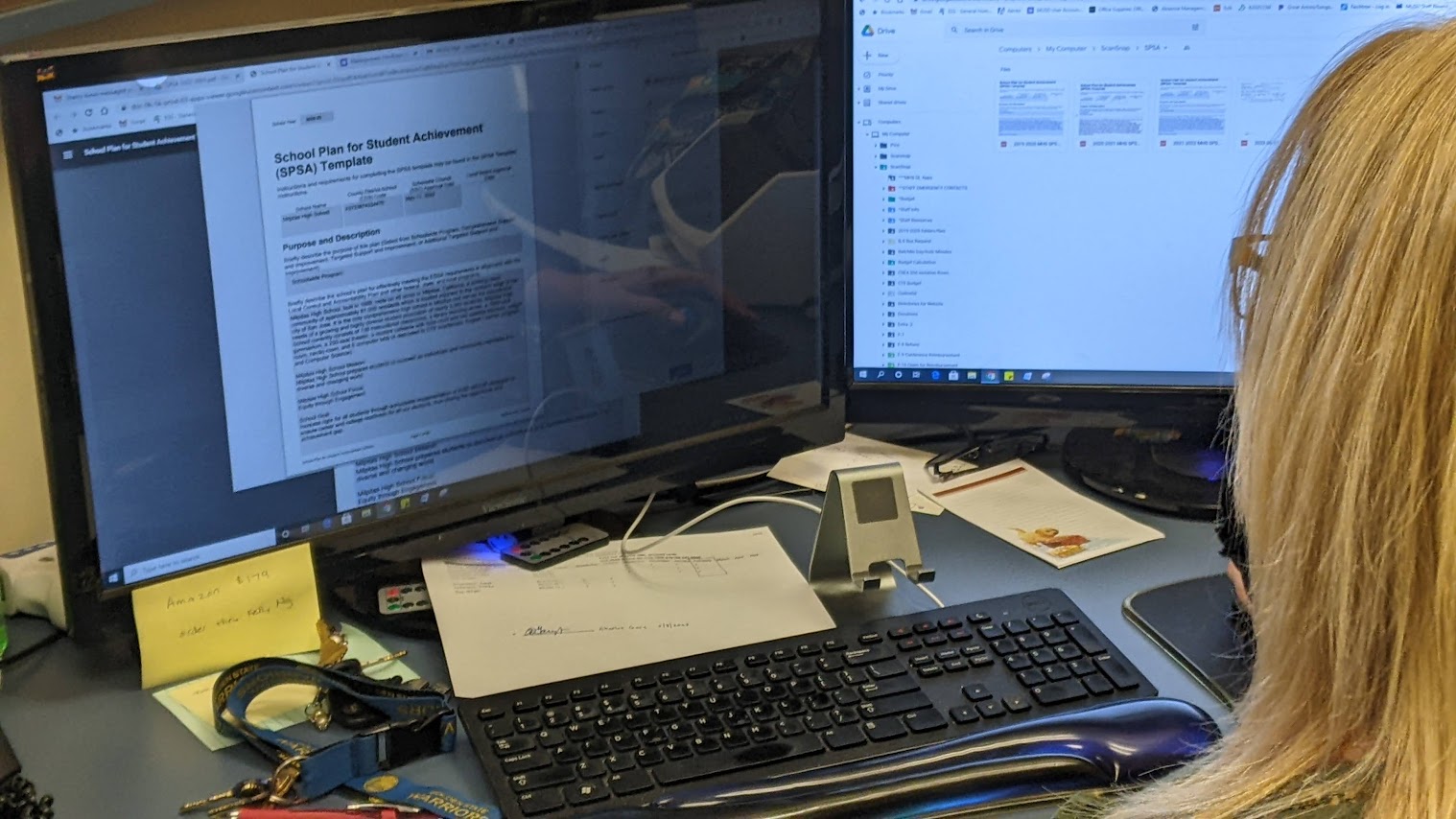CORRECTION:
In the February 2023 edition of The Union, in the article “Student Site Council Make-up Does Not Comply With State Law,” a reporter misquoted Interim Principal Charles Gary. The story stated, “[T]e School Plan for Student Achievement (SPSA) has not been reviewed on an annual basis, Interim Principal Charles Gary Jr. said” on page 1 and “Although the SPSA should be reviewed annually, MHS only reviews it when WASC accreditation occurs every six years, Gary said” on page 16.
In an email to The Union, Gary clarified, “MHS has a process which involves the School Site Council to review progress on interventions to improve student achievement annually and to approve the SPSA for the next year. The SSC receives annual assessment data which they review.”
The School Site Council (SSC) at MHS is out of compliance with California law because student and teacher members were not elected by their respective peers, Interim Principal Charles Gary, Jr. said.
California Education Code Section 65000 stipulates that “a school that operates a program that requires a School Plan for Student Achievement (SPSA), pursuant to Section 64001, shall establish a schoolsite council.”
“The SPSA is designed, implemented, and monitored by the SSC to ensure that the LCFF (Local Control Funding Formula) funds are being spent effectively to support the school’s improvement efforts to attain the highest possible levels of teaching and learning at the school,” according to MHS’ website.
For a secondary school, California Education Code says that the SSC should consist of the principal or a principal designee, teachers, non-teacher school personnel, parents, and students, all chosen by their peers.
At one of the SCC meetings this school year, only two teachers and two students were present, and none of them were elected, Gary said.
“The two students there left the meeting right after they finished their report, before we had even begun to review the SPSA,”Gary said.
Associated Student Body (ASB) class commissioners are appointed to the role of SSC representative, Activities Director Jerell Maneja said. The role of the representatives has been one of liaisons, Maneja said. The scope of their impact on the council was limited to their lens on ASB, he said.
“The goal is to represent the student body, and ASB commissioners create reports for every SSC meeting that reflect their impact on the student body,” Maneja said. “It’s difficult to know the impact of their presence at SSC.”
To shed light on the importance of the SSC and comply with state laws, MHS will offer a new position of SSC representative in the coming election season, Maneja said.
“The question then becomes, for a fair representation of SSC for a campus of 3,200 students, how many people would have to participate in these monthly meetings,” Maneja said. “There’s an apathy surrounding these valuable opportunities for engagement, and we’re trying to figure out why.”
According to the California Department of Education’s website, “The SSC shall develop the content of the SPSA. The SPSA shall be reviewed annually and updated, including proposed expenditure of funds allocated to the school through the ConApp and the local control and accountability plan (LCAP), if any, by the SSC.”
“The SPSA is a tool for us to self-evaluate, but it requires more work on our end to succeed,” Maneja said. “Anything can look good on paper; it’s about how we implement it.”
William Lam, a parent representative and the chairperson of the SSC, has served on various SSCs in the district for twelve years, hoping to make a positive change, he said.
“I have a passion for education and like to know that I can make a tiny difference when I serve on the council,” Lam said. “I don’t know if everything I say truly has an impact, but at least there is a system in place where parents can have firsthand information from the principal and voice their opinion directly.”
The lack of participation on the council shortchanges its productivity and functioning, Gary said.
“I would like to see more student participation, but what I notice is that after students give updates about events at the school, they don’t raise their voice afterward,” Lam said.
Lam finds that participation is closely tied to time, as parents and administrators must take a portion of time outside of the workday to participate in the council, he said.
“I’ve been trying to promote the SSC for many years,” Lam added. “Unfortunately, I find that parents, even if they want to participate, might not have the bandwidth to do so.”
At a recent staff meeting, Gary asked for volunteers to address the issue of compliance for the SSC and was met with hesitation, he said.
“Since the co-curricular duties for teachers changed to a number of after-school service hours, it’s a choice between going to a few basketball games or a monthly meeting where teachers take on a leadership role outside of their job,” Gary said. “To meet our quorum, we need three more teachers to serve on the council.”

